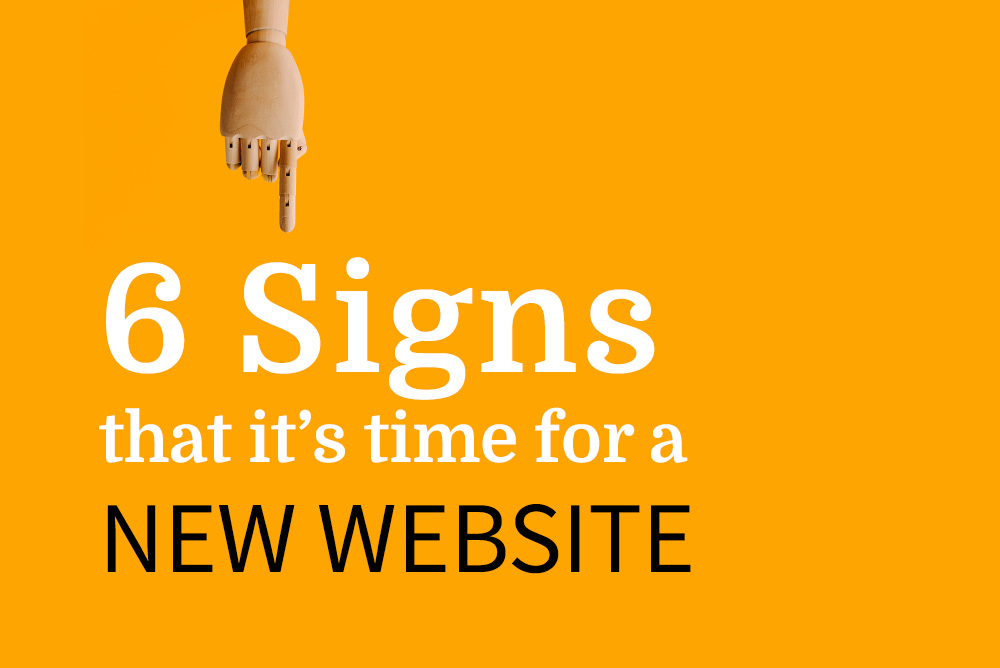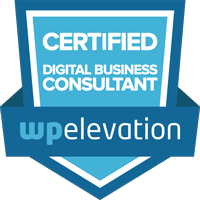6 Signs That it’s Time for a New Website
When was the last time you evaluated your website to determine if it was time for your company to consider a new site? The lifespan of the average website is about 2 years, 7 months according to Orbit Media. According to Thomas Digital, if you are in a competitive industry you should have a new website every 2-3 years.

Following are 6 tell tale signs that the time has come to reevaluate your website:
1. It’s a pain to update your website, so you avoid it.
Your company’s website is such a hassle to update that you avoid doing it. You may even find work around solutions just so you don’t have to touch the website. Perhaps you recognize one of the following situations?
You have to call a web developer to make updates (and you dread it).
You wish you could just update the site yourself instead of depending on web shop for even the smallest of changes. The shop that built your site is difficult to deal with to say the least. You have to submit a support ticket to make even a simple change and it could be days until that change is made). Not to mention, the developer assigned to you isn’t the friendliest and forgets that you are the customer. Add to that the cost – simple changes seem to cost a whole lot.
You have no idea how to update it or it’s a huge production to make updates.
When the site was built, you were told you’d be able to easily update it. Unfortunately, that’s not the reality. It feels like you need to know how to code just to figure out how to change a word on the site. You don’t even kid yourself with actually making larger updates.
You can’t remember the password to login.
It’s been so long since the site has even been updated that no one on staff has the login information. You don’t even know who built the site to begin with.

2. You are embarrassed at how outdated the design is.
You do everything to avoid sending customers to the website. The first impression they’ll have of your company is a website that looks like it was designed around 2005. It certainly doesn’t reflect the experience they’d have in person. Do either of these describe your situation?
The website was built before you took the job.
You inherited this website, including the outdated design. Try as you might, the website is making your job harder. You have modern and updated marketing materials but the design of the website doesn’t match any in-person experience potential customers have with your company.
It was designed by committee.
We all know the results of "design by committee" and yet it still happens to the best of us. Buy-in from key stakeholders is important. But even a well-meaning committee can get distracted by the details and lose sight of the website's actual audience -- its current and potential customers.

3. Your website is being held together by the duct tape of plugins.
Plugins can be great. They can add additional functionality to your website relatively easily. The downside of plugins is that if you've got too many, they can slow down your site speed and they can also conflict with each other. A simple plugin update can result in your website breaking. If you know you've got loads of plugins, at the very least you want to consider whether they are adversely affecting your website's performance and remove the ones that you don't really need.

4. Your website is a glorified business card.
If the main purpose of your website is in essence to provide your contact information, you might want to rethink that strategy.
B2B customers are already 57% of the way through the buying process from online research before they even engage with someone from a company. (Google)
Whether you design it as such, your website is part of the sales process for your potential customers. They are deciding whether to buy from you, based primarily on your website. When you treat your website like a business card, you miss the chance to share why they should buy from you. Not to mention making it easier for them to buy from you.

5. You have to direct people on where to find things on your website.
If you have to tell potential customers where to find things on your website, then your website is definitely not doing its job. Content should be easy to find by someone that knows nothing about your company or organization. If your office takes regular calls to tell people how to get to certain things on the website, you need to reevaluate your site. Not only is your website not making you money, it could be costing you money by using administrative resources with these calls.

6. Your website doesn't work on mobile.
It’s absolutely critical to have a mobile-first or responsive website. In 2018, 52.2% of all website traffic worldwide was generated through mobile phones (Statista). Can you afford to lose this many potential customers? Search engines like Google also penalize websites that are not built mobile-first. Having your site work on mobile is an absolute must.
In conclusion, your website is your most powerful sales and marketing tool. Don’t lose out on sales by letting your website fall by the wayside. Take action today to start planning improvements on your current site or consider a full website redesign.






